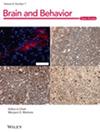Risk Factors and Prognostic Models in Acute Large Vessel Occlusion Stroke: Insights From ASPECTS-Net Water Uptake
Abstract
Background
The outcomes of endovascular reperfusion in acute large vessel occlusion stroke (ALVOS) vary, with some patients recovering fully while others face disability or mortality despite recanalization. Alberta stroke program early CT score-net water uptake (ASPECTS-NWU), a quantitative imaging metric assessing tissue edema and infarct progression, may improve prognostic accuracy.
Methods
This study included 96 ALVOS patients between December 2020 and March 2024. Patients were categorized into good (modified Rankin Scale [mRS] 0–2) and poor (mRS 3–6) prognosis groups based on 90-day mRS outcomes. Feature selection using Least Absolute Shrinkage and Selection Operator (LASSO), Boruta, and logistic regression (LR) identified key predictors, including LVO, Alberta Stroke Program Early CT Score (ASPECTS), ASPECTS from the follow-up CT (ASPECTSFCT), and National Institutes of Health Stroke Scale (NIHSS) scores. Predictive performance was validated with cross-validation, and model calibration was assessed via calibration curves, receiver operating characteristic (ROC) curves, area under the curve (AUC), and the Spiegelhalter Z-test (significance set at p < 0.05).
Results
LR highlighted LVO, ASPECTS, ASPECTSFCT, and NIHSS as significant predictors of poor prognosis. The constructed nomogram enables individualized risk assessment, with total points correlating to poor outcome probability. ROC analysis showed good discriminatory ability in the training set (AUC 0.815, 95% confidence interval [CI]: 0.714–0.916) but moderate performance in the test set (AUC 0.688, 95% CI: 0.484–0.891). Calibration was strong in the training set (Spiegelhalter Z < 0.0001) but showed minor issues in the test set (Spiegelhalter Z = 1.222).
Conclusions
This study highlights the prognostic value of ASPECTS-NWU in ALVOS and its integration into a predictive nomogram for individualized risk assessment. By refining ischemic injury stratification, ASPECTS-NWU can guide therapeutic decisions, optimize post-reperfusion management, and improve patient outcomes.


 求助内容:
求助内容: 应助结果提醒方式:
应助结果提醒方式:


